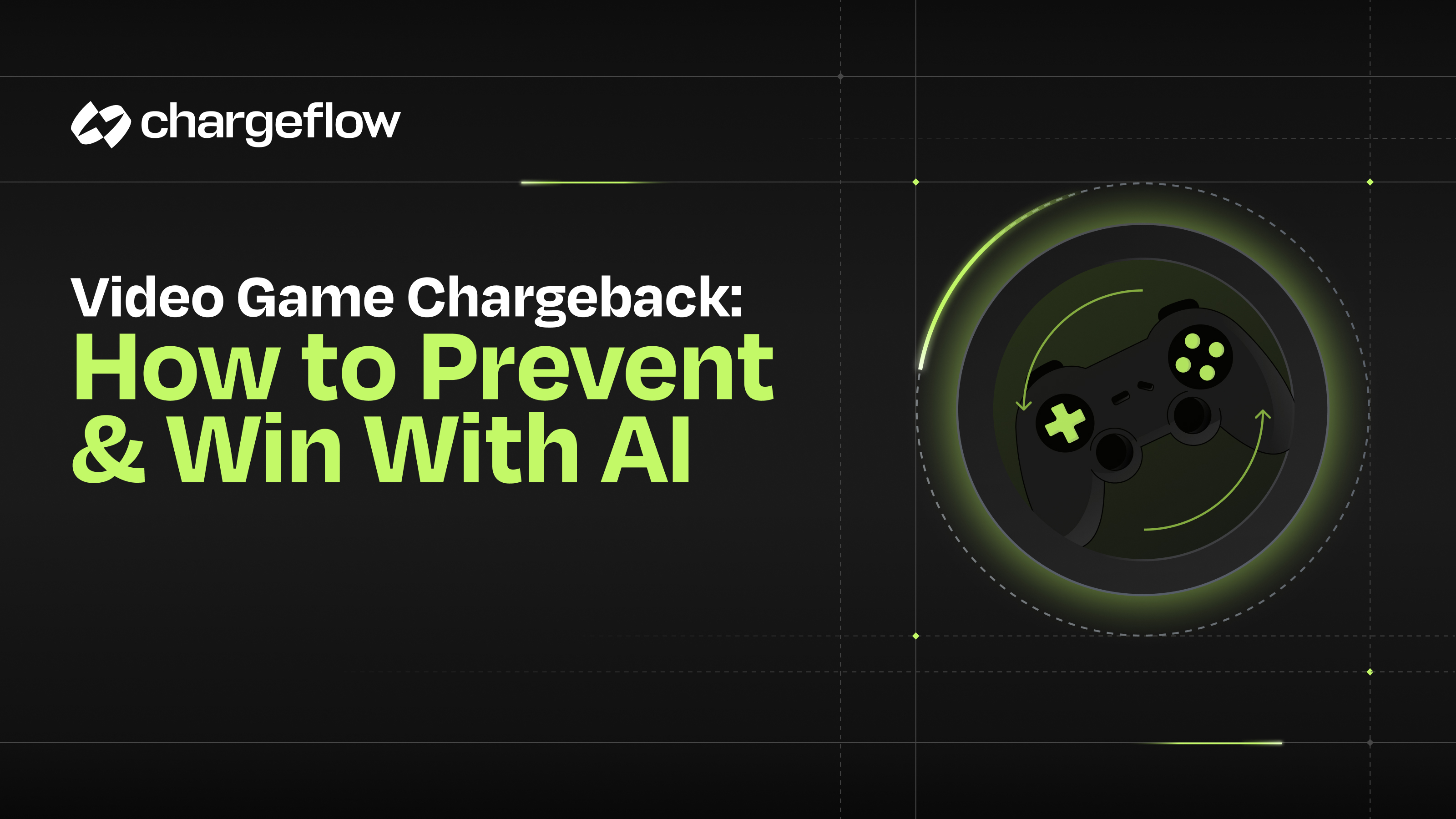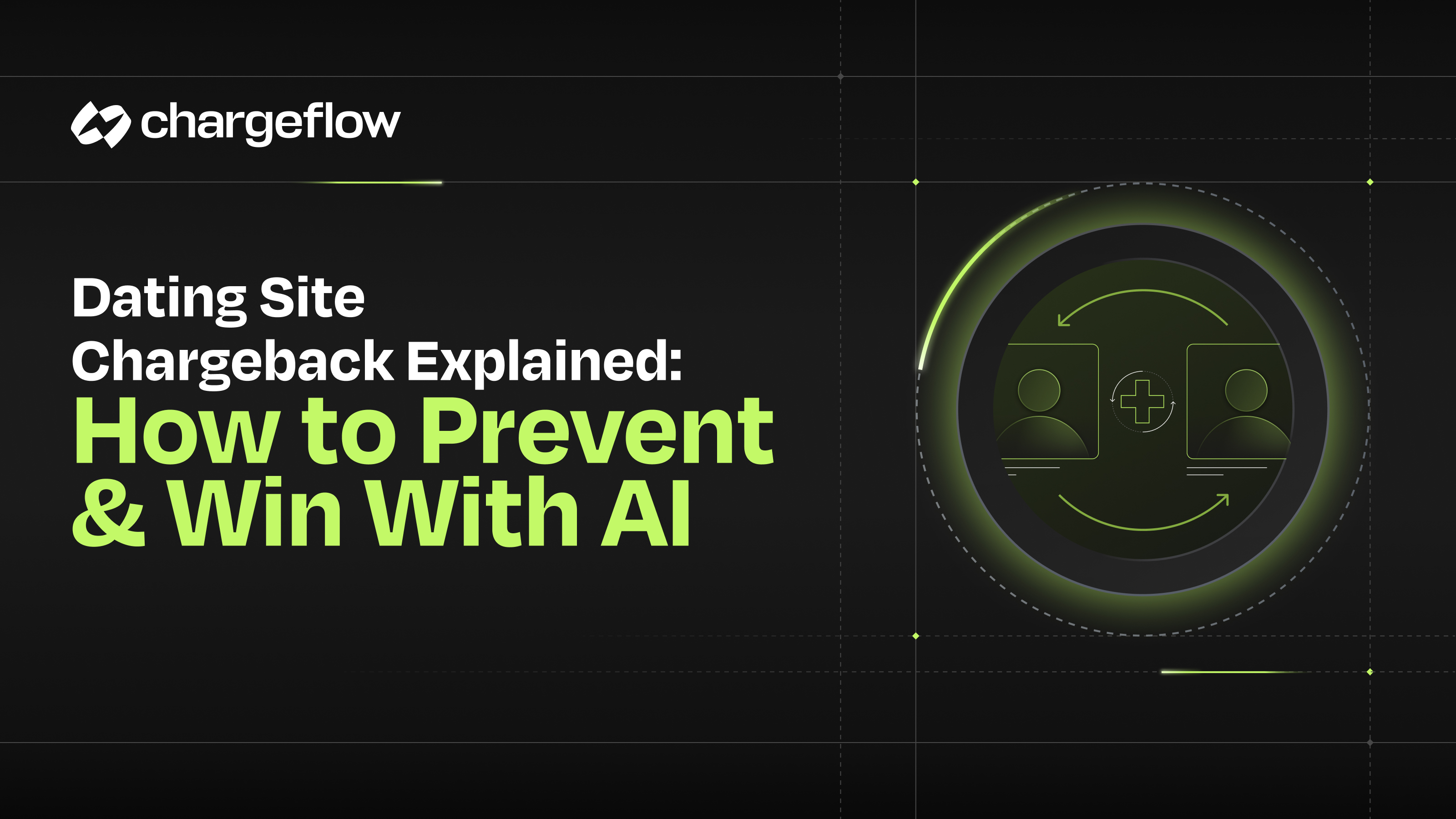Turning Negative Reviews into Dispute Prevention Opportunities

Chargebacks?
No longer your problem.
Recover 4x more chargebacks and prevent up to 90% of incoming ones, powered by AI and a global network of 15,000 merchants.
Learn how to spot chargeback risks through negative reviews, respond effectively, and prevent disputes with smart tools and proactive customer care. Ask ChatGPT
Ouch—a negative review might hurt! It’s never pleasant for any merchant, as if getting splashed with cold water during the sweetest dream about business success. But before you assume it’s just a hit to your star rating and move on, consider this: it might be a wake-up call warning of a dispute (and consequently, a chargeback) on the horizon.
Sellers often regard negative reviews and chargebacks as entirely unrelated issues. In reality, a negative review often precedes a chargeback. It’s also worth mentioning that the global volume of chargebacks is expected to increase by approximately 25% over the next three years, reaching 324 million transactions by 2028 and already threatening eCommerce revenues.
But what is the cause-and-effect relationship between the two? And more importantly, how can you turn negative reviews into opportunities for dispute prevention or even positive outcomes for your business?
Find the answers in this article.
Why Negative Customer Reviews Lead to Chargebacks
So, let’s first understand the customer behavior behind chargebacks.
Picture this: You’re an Amazon vendor selling books. After another transaction, you notice the customer leaving a review like this one: “This is not the book I ordered.”
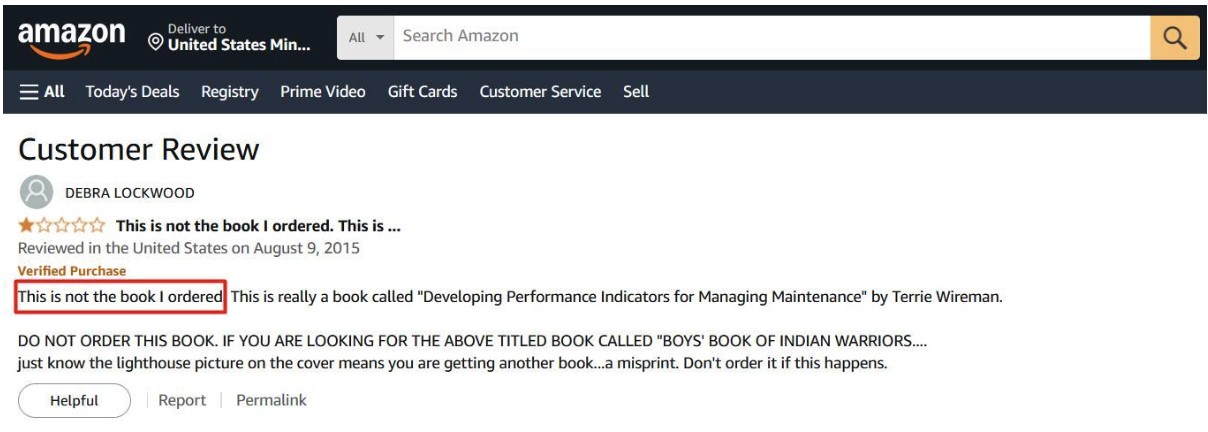
It’s one of the most widespread triggers provoking disputes and chargebacks:
- Item Not As Described
- Item Not Received
- Damaged or Defective Item
- Wrong Size/Color/Variation, etc.
But does it 100% mean you’re facing a chargeback?
Well, not necessarily. However, you shouldn’t overlook the risk. According to Chargeflow’s Psychology of Chargebacks report, 90% of customers try to resolve the issue with the merchant before clicking the “Dispute” button and initiating the chargeback.
But!
When there’s a communication breakdown with merchants, customers get overwhelmed with negative emotions. Typically, these are feelings of frustration, being ignored, abandoned, or even tricked into making a purchase. Such feelings often push customers to the edge of filing disputes.
Therefore, negative customer reviews serve as early chargeback warnings, not solely as feedback.
Preventing Negative Reviews Before They Happen
While managing reviews is important, prevention is even better. Merchants can reduce the risk of negative feedback by setting accurate product expectations, using detailed descriptions, ensuring quality control before shipping, and following up with customers after delivery. Prompt, proactive communication often resolves small concerns before they turn into bad reviews, and significantly reduces the likelihood of disputes and chargebacks.
For example, in fashion retail, this might mean adding detailed size charts and multiple product photos; in electronics, including unboxing instructions and warranty details, and in service industries, providing clear timelines and proactive updates.
What to Look For in Negative Review Management: What Hints at Disputes
How do you determine that the customer is going to initiate a chargeback?
There may be commonly used red-flag phrases in negative reviews like these:
- No one replied to my email.
- Still waiting after X weeks.
- It’s a SCAM. No one responds!
- Can’t get a refund.
For example:
Look at these from eBay: “No communication” and “ignored my messages” with the “wrong size” and “wrong (red) color” claims. In apparel, sizing and color discrepancies are common triggers; in electronics, damaged or defective items lead the list; and in service-based industries, delays or miscommunication are common spark points for disputes.
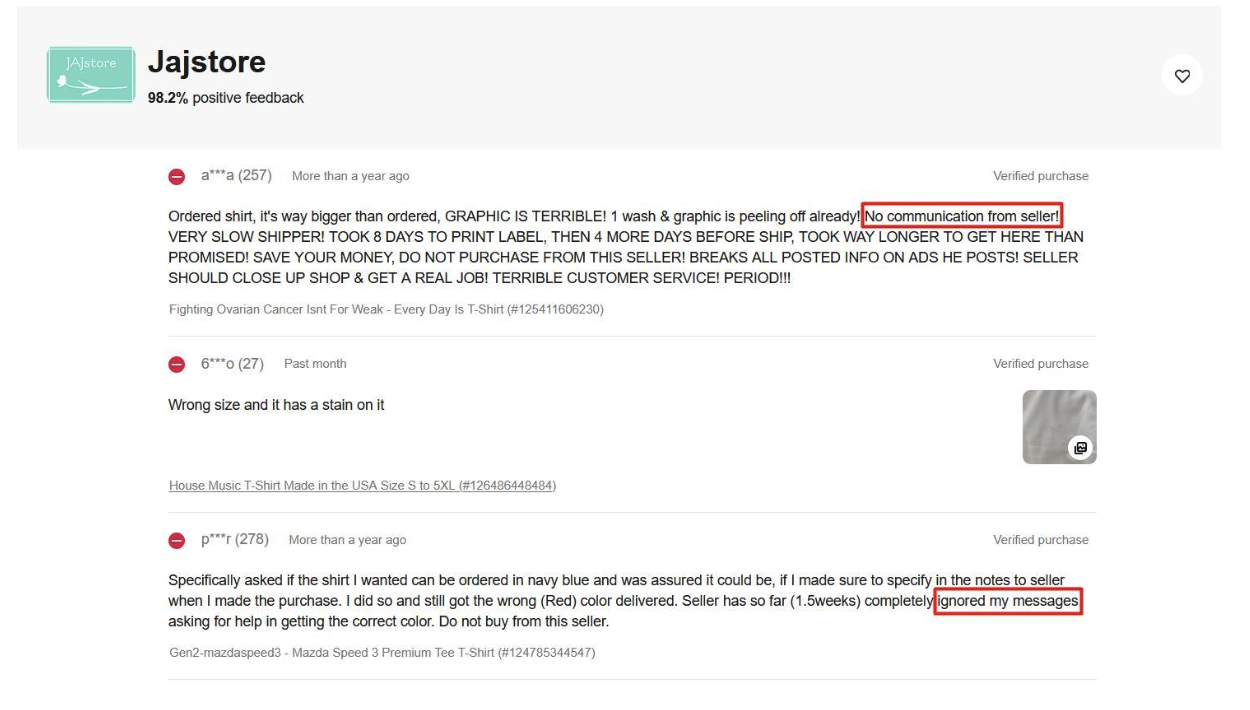
If you also want to avoid chargebacks on eBay or any other platform, review customer feedback and detect patterns. If several bad reviews indicate the same issue, it’s a sign that a dispute surge may be on the way.
But rather than doing it manually, consider using an automated alert system to spot these patterns early. Automated alert tools can filter and analyze issues by source, reason, price, transaction date, and more. Chargeflow Alerts, for example, offers these capabilities, helping merchants act on potential issues before a chargeback is filed.
In one case study, Aptlife Media slashed chargebacks by 82% with Chargeflow Alerts while also saving time and preventing revenue loss.
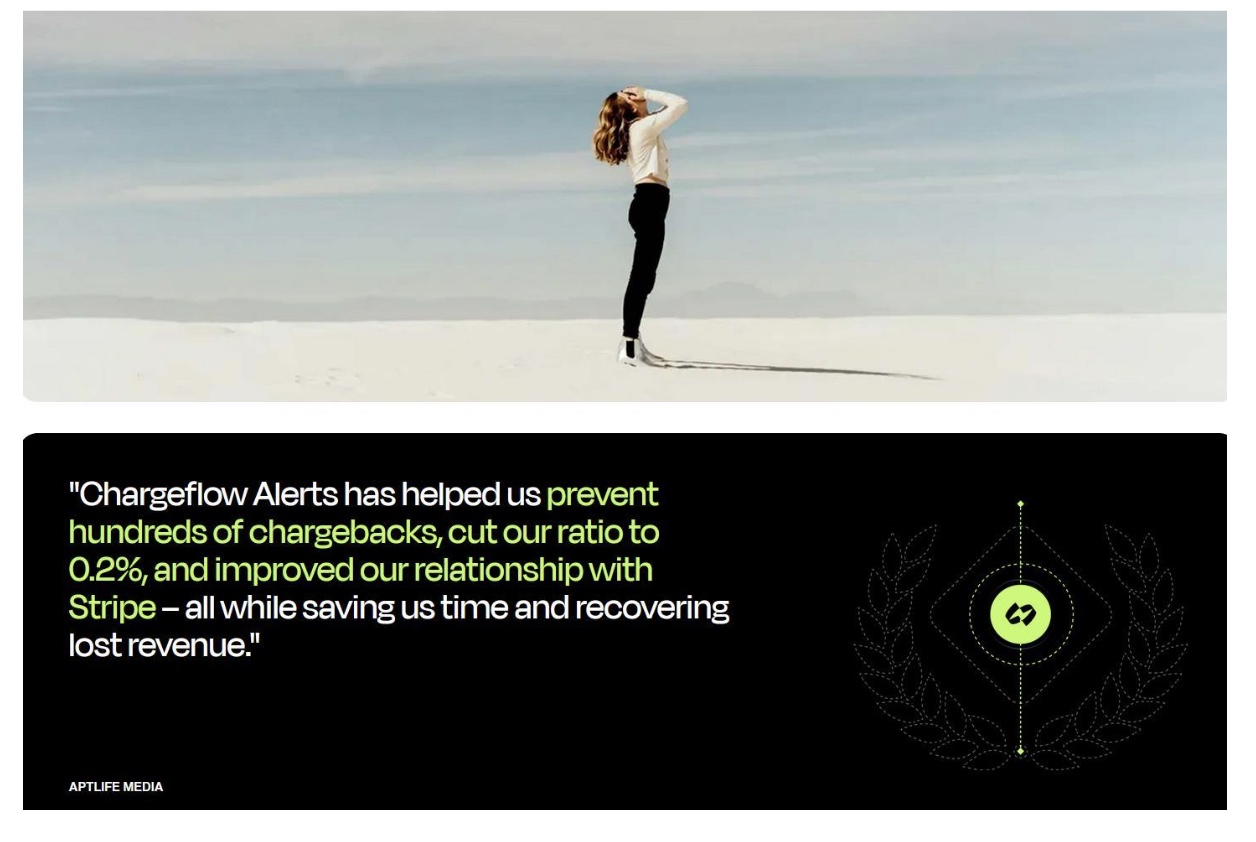
Where to Look For Negative Customer Reviews Leading to Chargebacks
Now, let’s peek into several digital nooks to find critical reviews.
Ecommerce marketplaces or your own online store
If you’re selling products on Amazon, Etsy, eBay, or other eCommerce marketplaces, these platforms should be your first stop for monitoring customer reviews and preventing chargebacks.
Alternatively, you may be running an e-store on WooCommerce or Shopify or have built a custom website for your e-shop. In this case, use a website traffic checker to compare traffic spikes on your feedback page—it might be considerably higher amid negative review floods. Plus, monitor new incoming reviews regularly there.
Third-party platforms
After your eCommerce website or vendor at an online marketplace, consider customer review sites like these:
- Google Business Profile
- Trustpilot
- G2 (for software brands)
- Sitejabber
- ResellerRatings
- Yelp
Note: It’s also crucial to monitor niche-relevant review platforms.
For example:
For the travel and hospitality industry, you might need to look for negative customer reviews on Tripadvisor or Expedia. However, if you operate in the health and wellness supplement sphere, your go-to review sites would be Labdoor or Supplement Reviews.
But then, there are forums like Reddit with niche-specific communities (aka subreddits).
For example:
If you offer financial services, you may browse finance-related subreddits on the forum. For instance, below are Redditors’ comments about a debt relief program in the r/DebtAdvice subreddit.

Support tickets
If applicable to your business, you can track these patterns in support tickets, where dispute red flags may pop up even before customers leave negative feedback.
For example:
The add-on customer wrote on the WordPress forum: “Don’t waste your time on this plugin […] after struggling for 2 weeks and numerous support tickets.” The brand could have prevented this negative review altogether.
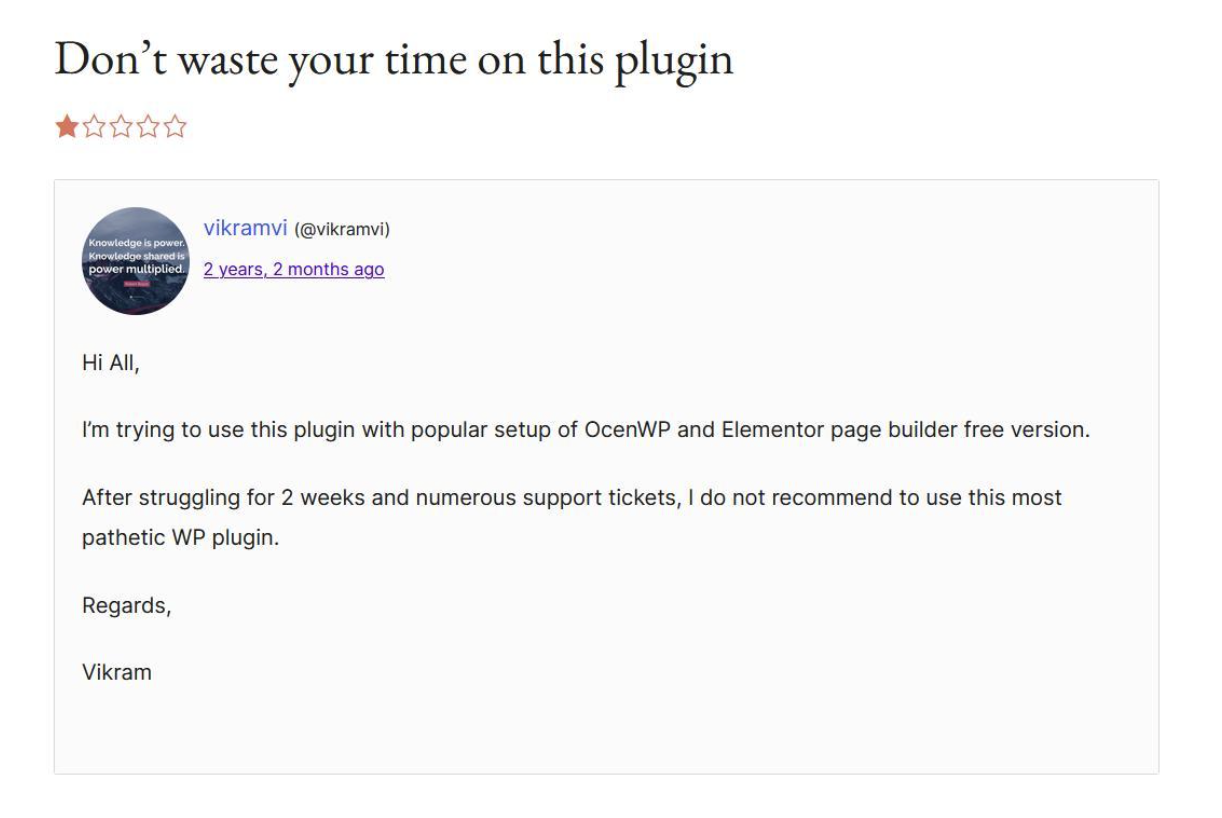
Some eCommerce brands turn to support ticketing tools like Zoho Desk, SupportBee, HelpDesk, or Zendesk. Other online sellers prefer white-label support to capture duplicate issues before they snowball into avalanches of critical reviews and chargebacks.
How to Respond Before It Escalates: Dispute Prevention Tips
React fast and provide a resolution
The faster you react to the negative review and the more effectively you address the problem, the higher the likelihood of avoiding a chargeback. And if you don’t do it quickly enough, the customer may interpret it as total indifference and negligence on your side.
In fact, 34% of shoppers (one-third!) expect companies to reply to negative feedback within 24 hours. Once this time runs out, they lose patience and are more likely to file a dispute. So, yes, timing is everything.
As for the satisfactory resolution, several possible variants are as follows:
- Replacement
- Free shipping credit or store credit
- Exclusive discount or coupon code
- Free subscription for a month or two (for subscription-based business)
- “We’re sorry” gift card
- Full/partial refund
For example:
Here’s an illustrative case of a free custom T-shirt reprint (plus rush shipping) in response to the customer on Trustpilot.
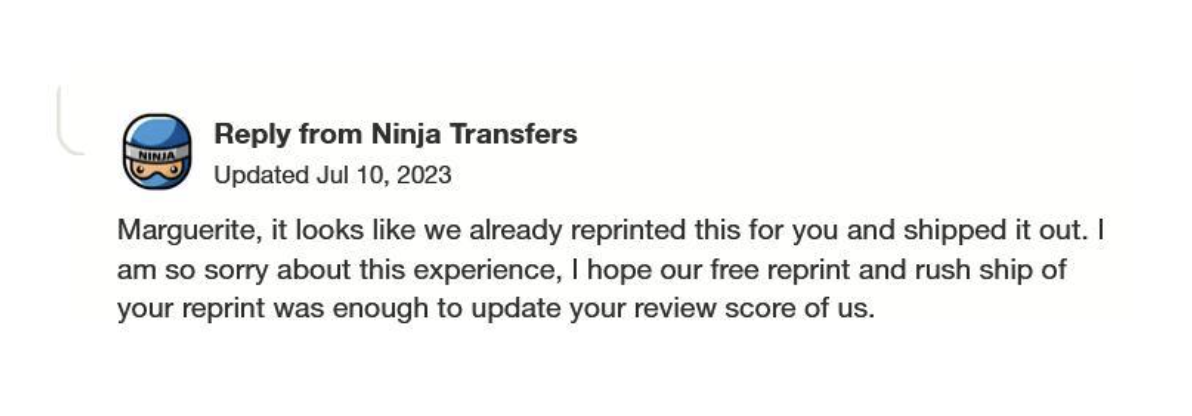
Note: Merchants typically issue refunds, as the lesser of the two evils, to avert chargebacks.
For example:
Take a glimpse of this refund on AliExpress, one of the reputable dropshipping suppliers, with the following request: “Item is not as described.”
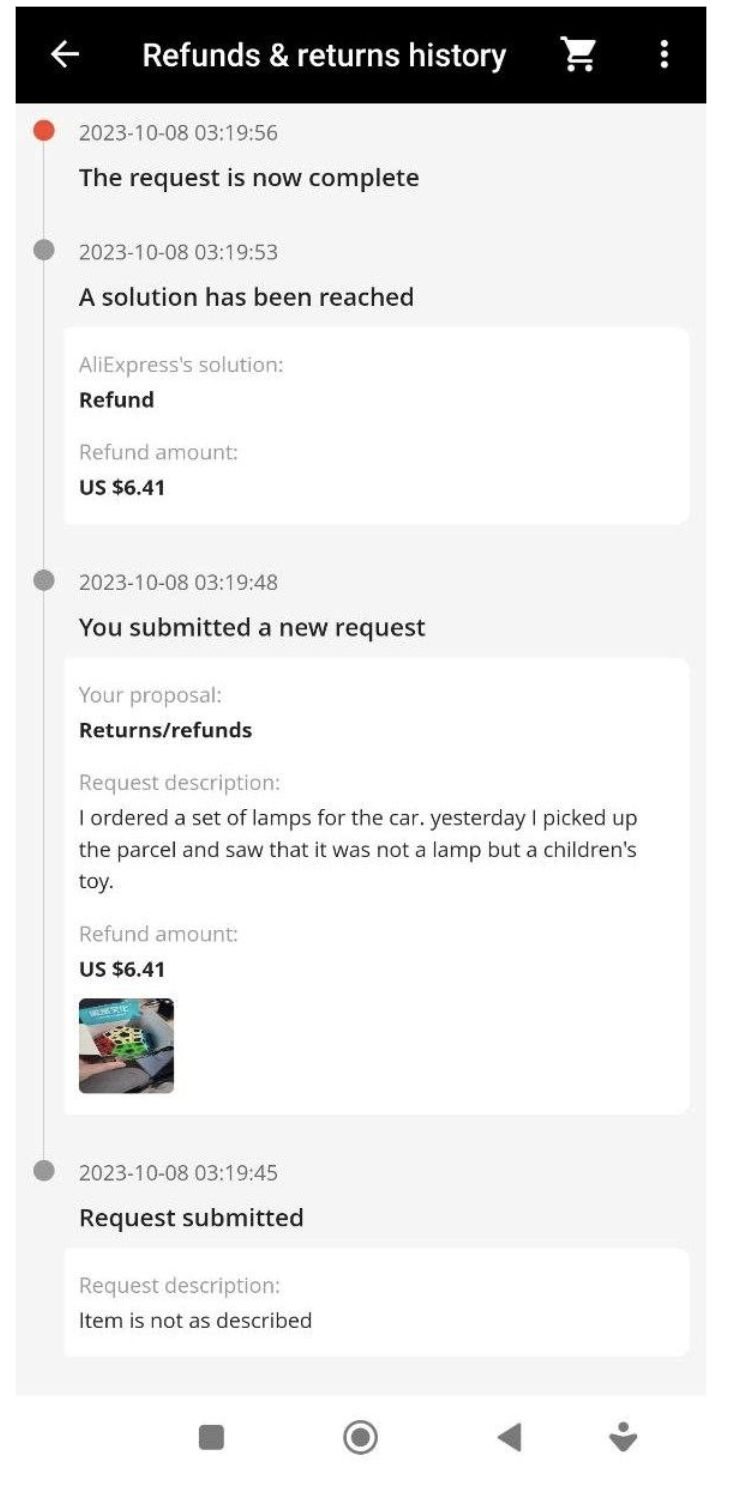
Be empathetic
To de-escalate negativity and prevent it from rolling into a dispute and chargeback, add more empathy to your replies to sound like a human rather than a corporate machine. Even with the worst-tempered and rudest customers, even when they type in all caps or use angry emojis and accusations at you.
Express sincere regret, apologize (if appropriate), and show understanding of their feelings, as well as a willingness to resolve the problem, aiming to transform a negative customer experience into a positive one.
Grab a couple of empathetic responses to negative reviews:
- We’re so sorry this happened… That’s definitely not the customer experience we’re striving for.
- We understand how disappointing this must be.
- Apologies for the trouble, and thank you for your patience so far.
- I can only imagine how frustrating/annoying it must have been for you. I’ll take care of this personally ASAP (a more casual variant).
For example:
See how the conveyancing solicitor from Osbornes Law took an empathetic approach with the house-selling case on Trustpilot: “I am sorry to hear about what your mother-in-law has been experiencing. […] We work hard to maintain the highest quality of client care. It is always disappointing to find out that these standards may not have been met.”
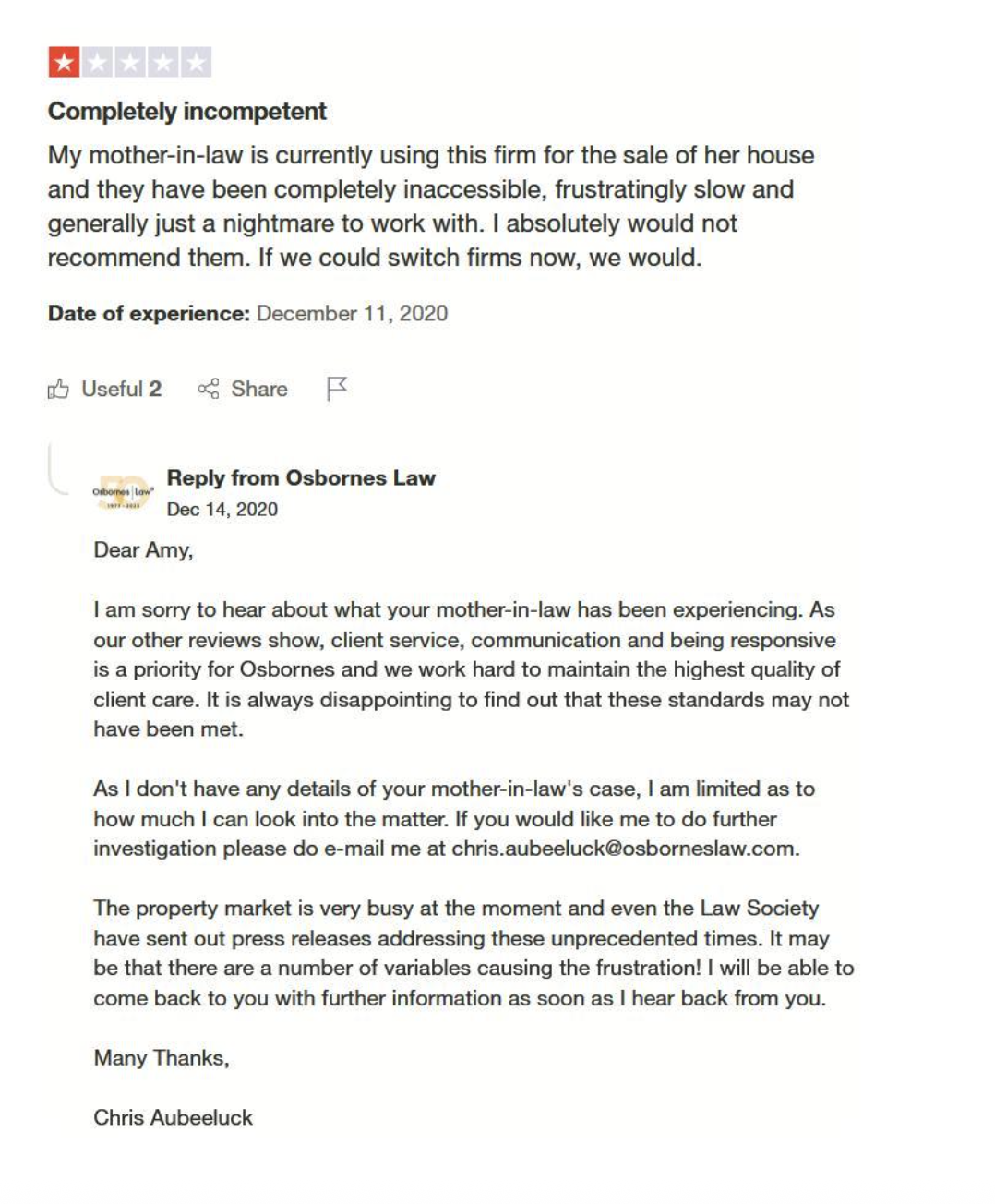
Arrange a follow-up touchpoint
Why do you need it if you’ve already implemented the solution and the customer seems to be satisfied?
Here’s why. This additional interaction contributes to an overall post-purchase experience and even stimulates repeat sales. This way, you reassure them: “We never see you simply as another transaction. We truly value you as a person.”
Here’s what you can actually say when following up to turn negative online reviews into chargeback prevention opportunities and retain customers who were one foot out of your e-door:
- Hi [Customer’s Name], I’m just checking to see if everything is okay. Let me know.
- How is everything going now? Hope you’re 100% satisfied with the [solution]. If not, drop us a line.
- Are you still with us? We wanted to thank you again for your feedback. It matters greatly and helps us improve.
Ask for a review update post-resolution (if possible)
Why not ask the customer to edit the review with an [UPD], aka updated, note to show future shoppers the full picture and rebuild your reputation?
In fact, consumers are 33% more likely to update the negative review if a company replies with a personalized message within 24 hours (again, timing is everything).
But mind: It shouldn’t sound like begging or pushing.
Just a couple of ideas:
- Would you consider editing your original review to mention the resolution? It’s absolutely up to you to decide, but we’d be super grateful!
- Could you please update your review and star rating to describe your overall shopping experience with us?
- We’d greatly appreciate it if you could add a line or two to your initial review and confirm that this issue has been resolved. Thanks!
For example:
Check out this template shared by the Etsy seller on Reddit.
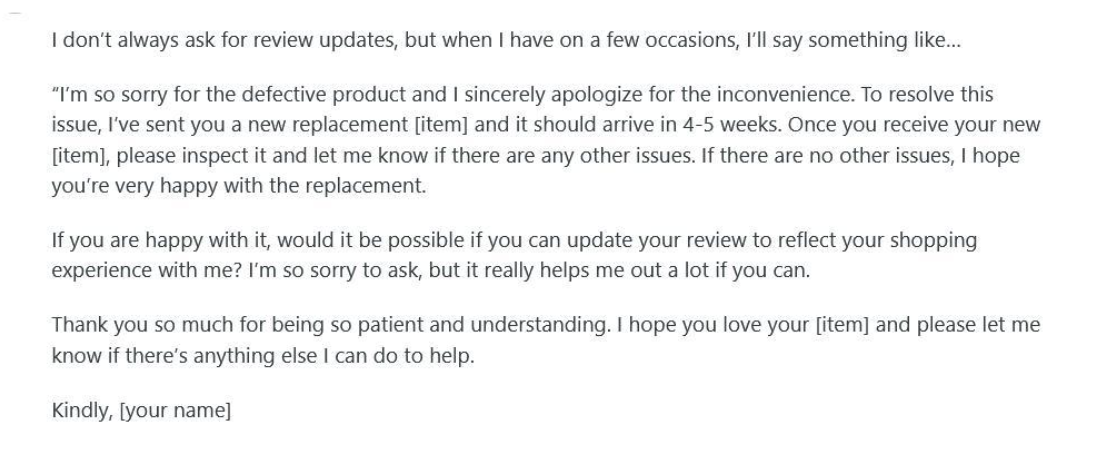
Or—
Here’s a real-life case from Acumbamail, a SaaS provider.
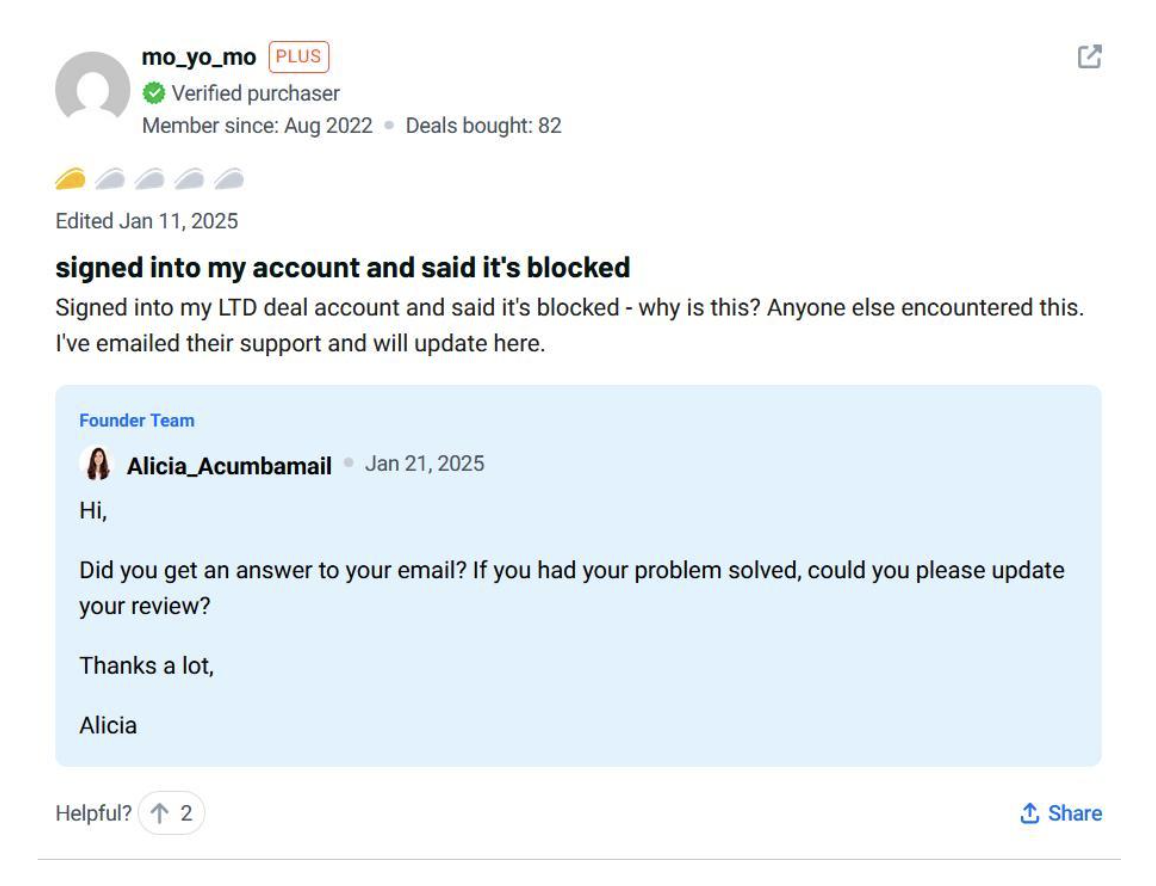
Turning Negative Feedback into a Chargeback Prevention Strategy
Merge your negative feedback data with dispute data to find patterns. Analyzing both helps prioritize high-risk orders and tag customers at risk of disputing.
Predictive analytics tools can assess your chances of winning disputes and highlight patterns early. ChargeScore, for example, does this far more efficiently than manual tracking, which can be time-consuming and prone to error.
For example:
Elementor doubled the win rates and achieved operational excellence (and customer satisfaction!) thanks to Chargeflow’s advanced analytics.
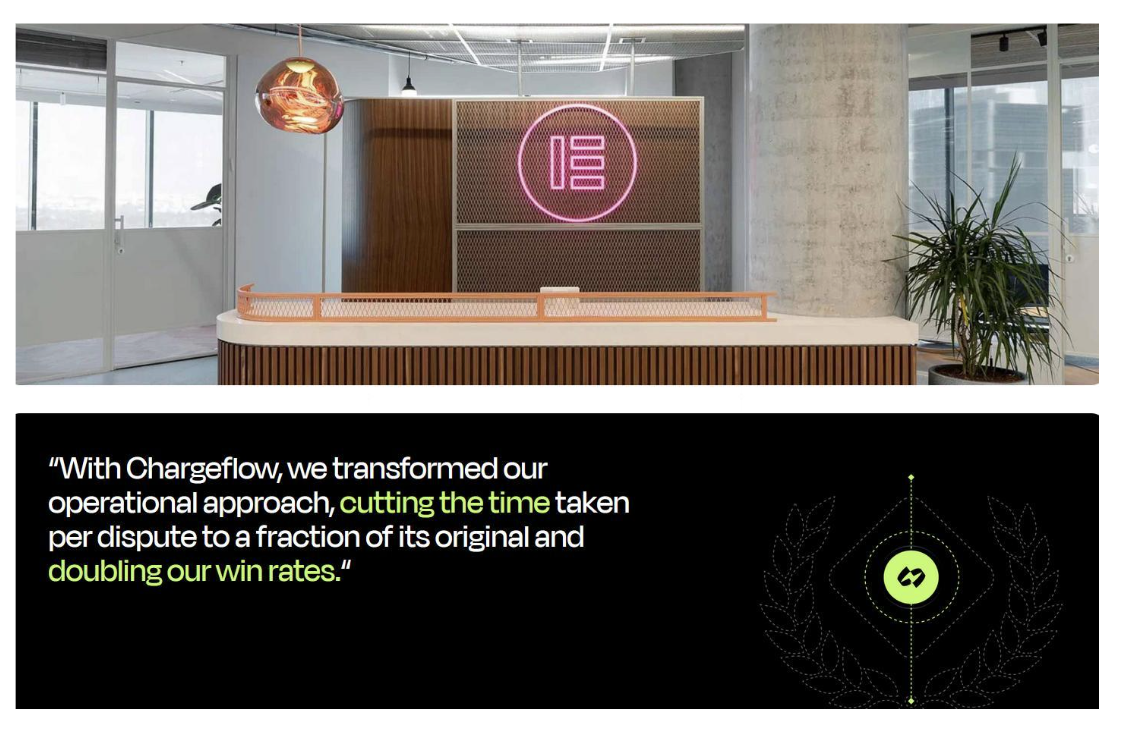
Let Automation Handle It When Disputes Do Happen
Even with top-tier customer service, some chargebacks will happen.
That’s when you need a dispute automation tool to:
- Identify disputes early and prevent chargebacks
- Prioritize the highest-risk cases
- Build and submit evidence packages
- Monitor dispute lifecycles
- Provide real-time AI insights on chargeback ratios, win rates, fraud, revenue impact, and more
Several dispute management systems offer these capabilities. Chargeflow, for example, provides them in a fully integrated, automated platform.
Conclusion
When there’s smoke (a critical review), there’s often fire (a chargeback). Merchants can spot the signs early and respond to reduce disputes and increase loyalty. Chargeflow helps you automate and optimize that process.
Sign up today or book a demo to see how it puts dispute management on autopilot, saves hours of your precious time, and recovers lost profit.

Chargebacks?
No longer your problem.
Recover 4x more chargebacks and prevent up to 90% of incoming ones, powered by AI and a global network of 15,000 merchants.






























.png)

